
Exploring Nature LTD
Exploring Nature


News and Gallery
Play in Motion: Tyre & Plank Adventures

Invites children to engage in exciting, child-led construction and movement play using tyres, planks, and other natural materials. This type of safe, risky play encourages children to assess challenges, build confidence, and test their limits in a supportive environment. As they climb, balance, and build, they develop essential core strength, coordination, and gross motor skills—foundations that directly support fine motor control and writing later on. The open-ended nature of the play fosters project planning, teamwork, and critical thinking, all while having fun and taking ownership of their learning through creativity and movement.

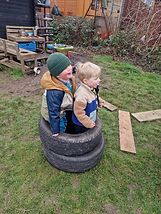
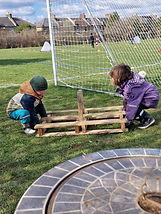

Lifecycles
The children have been learning about the life cycle of frogs, observing firsthand the transformation from frogspawn to tadpoles in our pond. They’ve engaged in observational painting, closely studying the changes they see and documenting them creatively. Using the RHS Seasons book, they’ve explored facts about frogs and deepened their understanding through research and discussion. This project supports scientific thinking, language development, and artistic expression, while also teaching pond safety and respect for wildlife—children learn to stay calm, move slowly, and avoid disturbing natural habitats. It’s a rich, hands-on experience that fosters curiosity, care for nature, and focused attention.
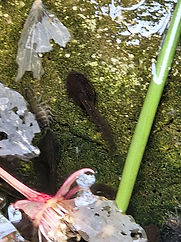








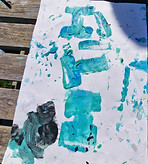
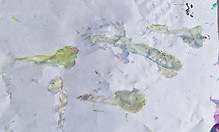
Tasting Session


"I love Elderflower cordial"
"It's like special squash"
"It's yummy"
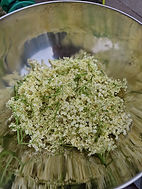
Growing Our Own Food
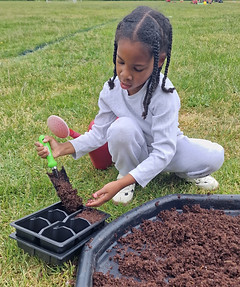
Encouraging children to grow herbs and vegetables is a wonderful way to foster a love for nature and healthy eating. Engaging in gardening helps children develop essential life skills, such as responsibility, patience, and teamwork. Moreover, it allows them to connect with where their food comes from, promoting healthier eating habits as they are more likely to try what they've grown themselves. This hands-on experience supports key outcomes in the Early Years Foundation Stage (EYFS), particularly within the areas of Understanding the World and Physical Development. For older children, it links directly to the KS1 Science Curriculum, including identifying and naming plants, understanding basic needs of plants for survival, and observing seasonal changes. Overall, gardening can be a fun and educational experience that nurtures both their minds and bodies.


The Great Den & Tree Challenge
Children explore the forest through child-led den building and tree climbing, promoting a wide range of developmental benefits. As they construct shelters using natural materials and assess trees for safe climbing, children build physical strength, balance, and coordination, while also developing problem-solving skills, teamwork, and resilience. They learn to assess risk appropriately, knowing and respecting their own limits, which fosters confidence and self-awareness. These experiences offer a rich context for reciprocity—helping one another, sharing ideas, and working collaboratively toward a shared goal. The activity links closely to the EYFS framework, particularly Physical Development, Personal, Social and Emotional Development, and Understanding the World. It also aligns with the KS1 National Curriculum in Design & Technology, Maths, and STEM, as children measure, balance structures, and explore the forces acting on their builds. Most of all, it’s fun, empowering, and gives children a real sense of achievement as they build, climb, and create together in nature.






Blending Beautifully: Tint, Tone & Shade Play
Children explore the magic of colour mixing through hands-on, creative experimentation with paint. Using primary colours—red, blue, and yellow—they discover how to create secondary colours like orange, green, and purple, while exploring tints, tones, and shades by blending with white, black, or other colours. Children love to mix the paints with their hands, brushes, and even natural items they find around the Forest School site, such as sticks, leaves, and feathers, making each experience unique and joyful. This sensory-rich activity supports sensory regulation, allowing children to engage deeply through texture, colour, and movement. It links to the EYFS framework through Expressive Arts and Design, Communication and Language, and Understanding the World, and aligns with the KS1 Art and Design curriculum by developing knowledge of colour, experimentation, and creative confidence. Most importantly, it’s fun, calming, and encourages self-expression through play.



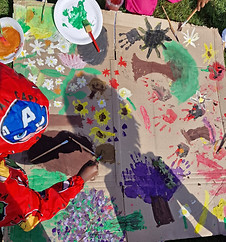
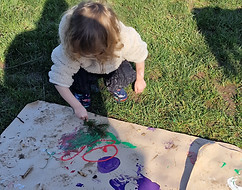


Earth Art: String & Stone Creations
Children explore natural textures and patterns by wrapping stones with string and decorating them with leaves, feathers, petals, and forest finds. This calming, hands-on activity encourages fine motor development, creativity, and focus, while also supporting sensory regulation through touch and repetitive movements. Children make design choices, experiment with materials, and express their individuality—developing confidence and artistic flair. It links to the EYFS Expressive Arts and Design area, and for older children, aligns with the KS1 Art and Design curriculum, which encourages experimenting with materials and developing visual and tactile skills. Each creation is as unique as the child who made it, and grounded in a deep connection with nature.


Build a Home for a Woodland Fairy
As part of our magical woodland learning, the children have been building homes and writing letters for fairies, using natural materials and their rich imaginations. This child-led project involved planning, problem-solving, and creativity, as they carefully considered what a fairy might need—such as a soft bed of moss, gifts like a shell or dandelion heads, and even a tiny fire to keep warm. One group noticed ants nearby and thoughtfully created a space for them too, imagining that the ants and fairies might be friends. This activity supports several key areas of the EYFS framework, including Expressive Arts and Design, Understanding the World, and Communication and Language. It also links to the KS1 English and Science curriculum, through storytelling, writing with purpose, and observing habitats. Through this joyful and imaginative work, children build empathy, narrative thinking, fine motor skills, and a deeper connection to the natural world.







We learn to use tools.


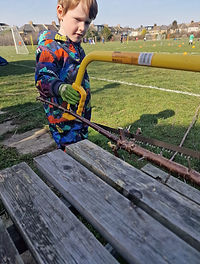
Children learning to use tools safely in forest school settings offers numerous benefits. It fosters a sense of responsibility and confidence as they gain hands-on experience with various tools. By engaging with nature and learning to use tools, children enhance their fine motor skills and cognitive abilities, promoting problem-solving and critical thinking. Additionally, this experience encourages teamwork and communication as they collaborate with peers, all while developing a deeper appreciation for the outdoors.
Spring Activities






